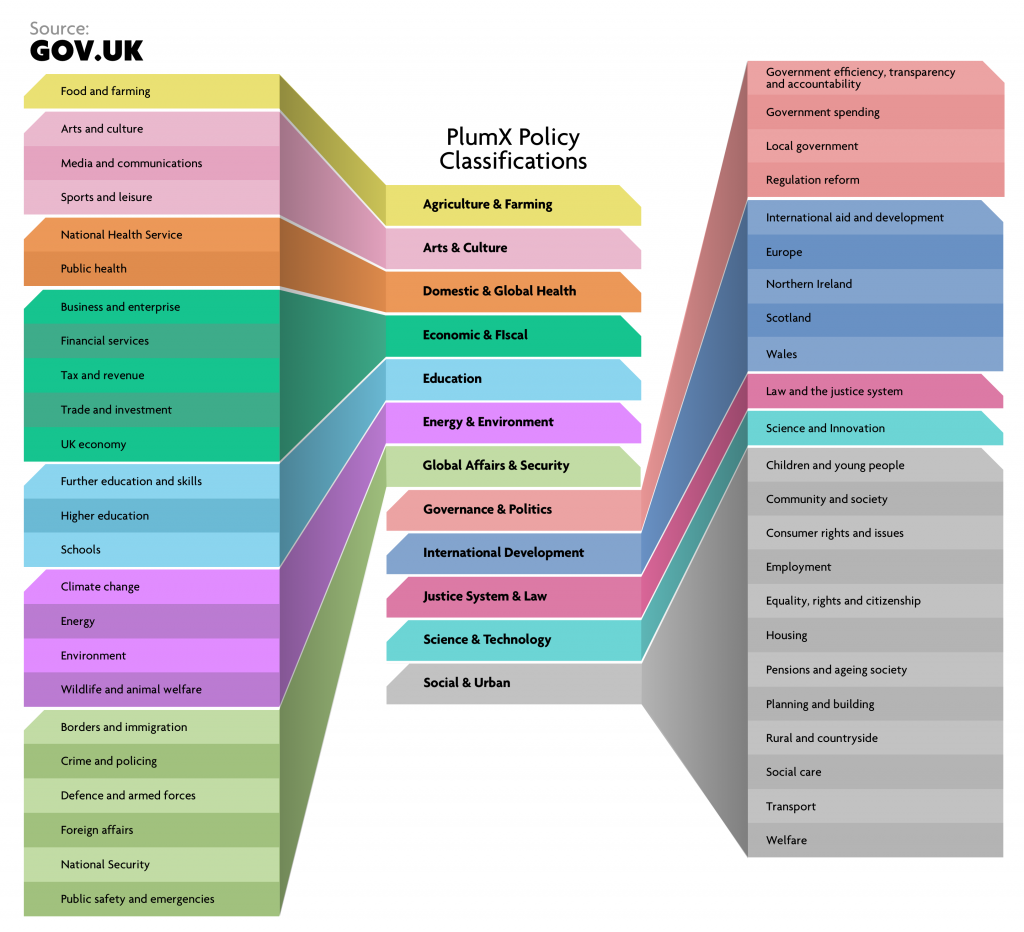Categorizing Policy Document Citations
At Plum Analytics, we’ve been working hard to incorporate policy document citations into PlumX. The term “policy documents” can be a nebulous way of describing documents resulting from the research of non-profits, governmental organizations and think-tanks. They can take the form of white papers, monographs, pamphlets, articles, books, book chapters or reports. They can contain words in the title like “Policy”, “Guidelines”, “Recommendations” or “Guidance” or they may just be research objects that are used in the creation of policy. They can be designed to drive policy makers and legislators to a particular course of action. They can also be actual statements of policy by public policy making institutions like Congress.
To bring order to the somewhat indefinable, we have been looking at ways to categorize the realm of policy documents. We surveyed the topic taxonomies of several policy generating and influencing institutions in order to find commonalities and distill what we found into twelve overall topics.
Some examples of these institutions include:
- Analysis and Policy Observatory (formerly Australian Policy Online)
- Congress.gov
- GOV.UK
- Harvard Kennedy School
- Public Policy Institute of California
We also considered the “Areas of Research” that James McGann created for the 2015 Global Go To Think Tank Index Report.
Below is an example of the areas in which the GOV.UK publishes policy and the corresponding topics we are considering.

Based on the common concepts and a few other important inclusions we are considering the following topics:
- Agriculture & Farming
- Arts & Culture
- Domestic & Global Health
- Economic & Fiscal
- Education
- Energy & Environment
- Global Affairs & Security
- Governance & Politics
- International Development
- Justice System & Law
- Science & Technology
- Social & Urban
You can download a chart of the organizations we’ve considered so far and how their policy areas map to our topics.
We’re interested to know your opinion. Is it useful to categorize policy documents in this manner? Are there any topics that we are missing? Are there different conceptual groupings you would find more useful? Let us know on Twitter @plumanalytics or send us an email.